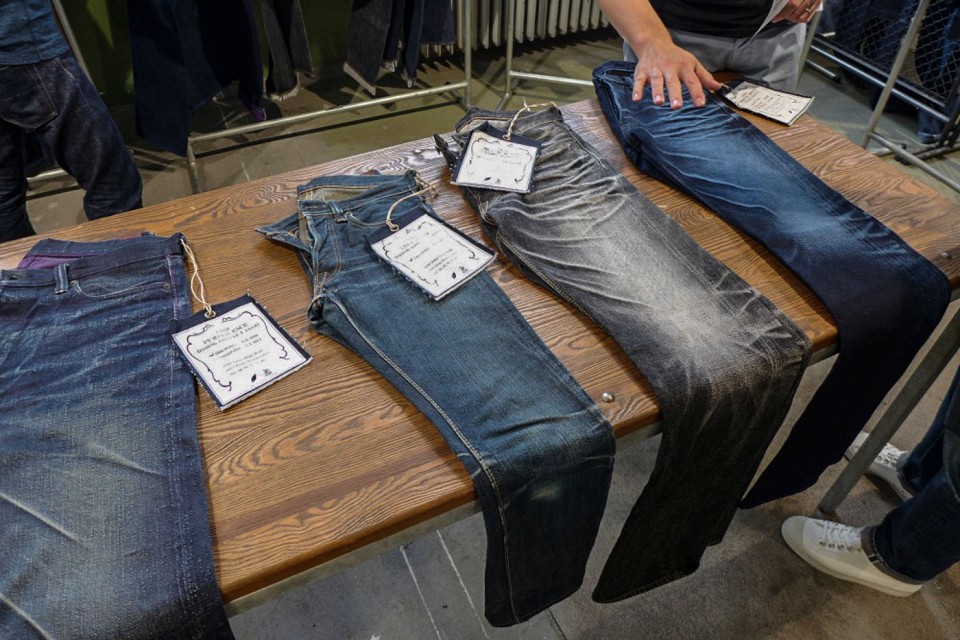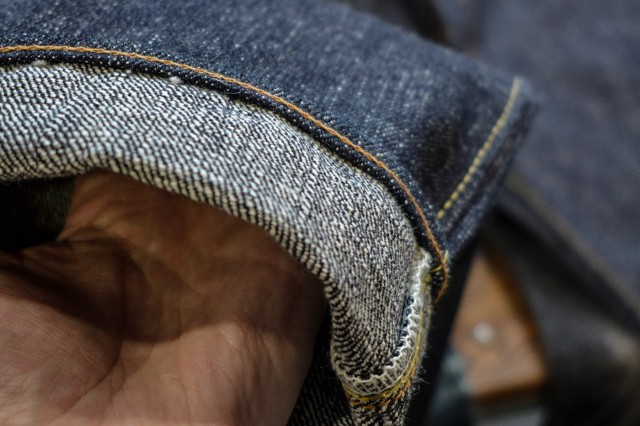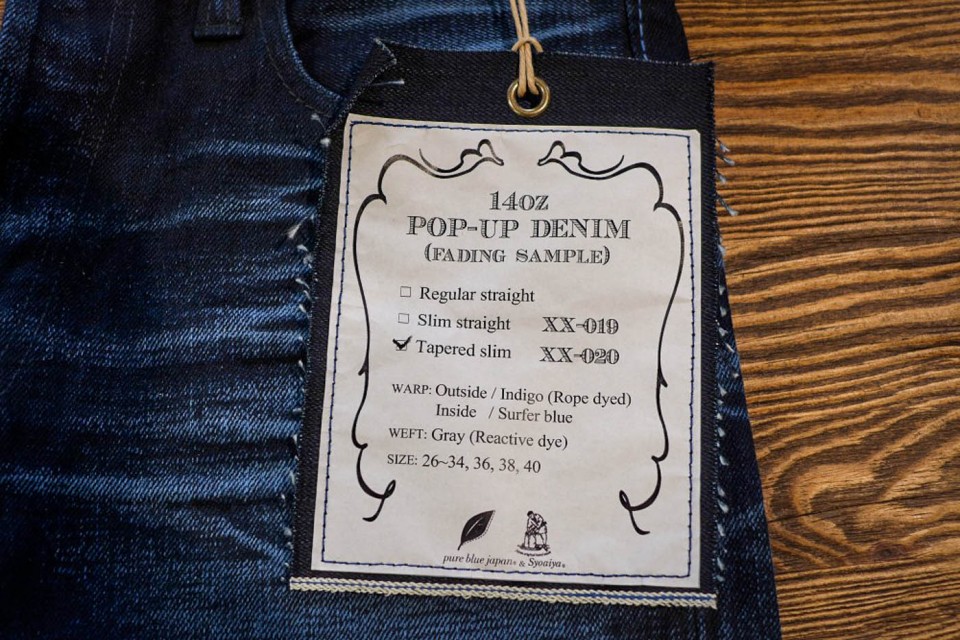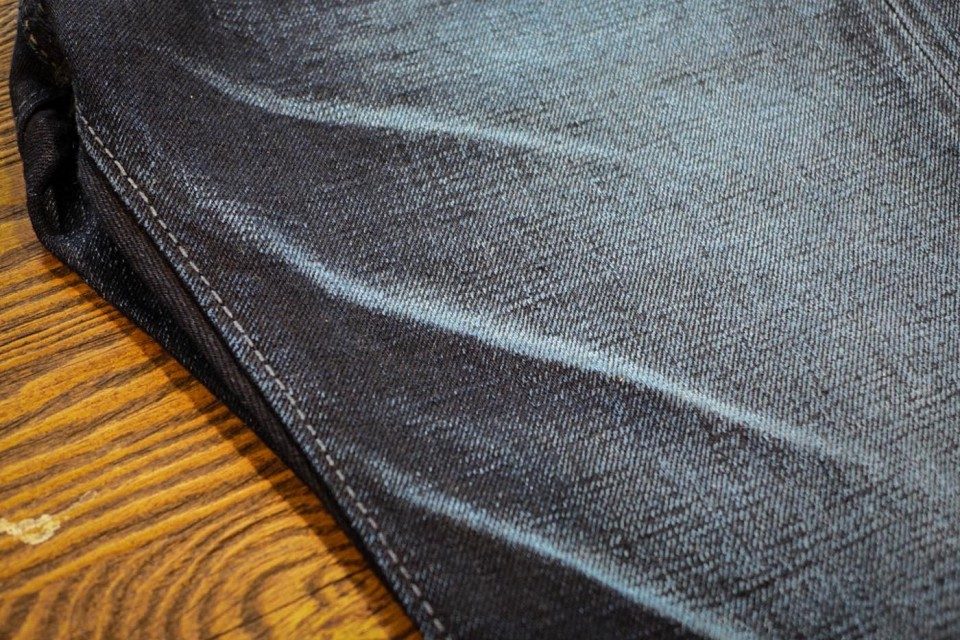Pure Blue Japan (PBJ), or Syoaiya, was established by Japanese denimhead Ken-ichi Iwaya in the historic city of Kurashiki in Japan’s Okayama prefecture. Since its founding in 1997 the brand has grown to be a firm favourite of many denim enthusiasts worldwide. It is easily identified by its Indigofera leaf logo.
The Indigofera leaf symbolises a key characteristic of PBJ and a commitment to Japanese tradition. They dye their denims using old methods and a variety of natural indigos and blends, which produces rich shades of deep indigo. Combined with the use of low-tension shuttle looms, giving a slubby texture to the denim, the results are beautiful contrasting fades.
Meeting the Brand’s Founder, Iwaya-san
Pure Blue Japan (PBJ), or Syoaiya, was established by Japanese denimhead Ken-ichi Iwaya in the historic city of Kurashiki in Japan’s Okayama prefecture. Since its founding in 1997 the brand has grown to be a firm favourite of many denim enthusiasts worldwide.
It is easily identified by its Indigofera leaf logo. The Indigofera leaf symbolises a key characteristic of PBJ and a commitment to Japanese tradition.
They dye their denims using old methods and a variety of natural indigos and blends, which produces rich shades of deep indigo. Combined with the use of low-tension shuttle looms, giving a slubby texture to the denim, the results are beautiful contrasting fades. I had a chance to meet with the brand’s founder Iwaya-san.

Ken-ichi Iwaya’s passion for denim started at a young age when he was working in one of the many denim companies based in Okayama. He was in charge of the sales and quickly fell in love with denim. At the age of 20 he decided to start his own denim brand; one that would preserve the old tradition of natural indigo dyeing.
Iwaya-san wanted PBJ to stand out from the competition and do something different. He wanted a unique denim that his recently established brand would be known for. At first the brand was using stock denims, but after much experimentation and debates with the denim mill, Iwaya-san found the slubby denim that his brand has become known for.Iwaya-san likes to be involved in each step of the production process:
“As a brand owner, I do a bit of everything, design, delivery, production, and so on. For me it is important to be on top of every single detail of the entire production process”.

Here in Europe, the popularity of PBJ is growing steadily. In the US, the brand has achieved a strong positioning, having their stronghold in New York City.
I asked Iwaya-san about the possibilities of collaborating with other brands, to which he replied:
“From my point of view, there are a few technicals problems when comes to making a collaboration. Production has to be quicker and this implies risking the quality standards of the garments.”
Clearly, PBJ don’t want to lose the focus on what they do best.
When discussing self-owned retail it becomes evident that PBJ is not interested in owning their own brick and mortar store outside Japan:
“It takes a long time to produce a entire collection and to keep a store stocked we would have to rush our production schedules. This rush could be compromised with the quality of our products. Expanding our business abroad could result in a loss of what we believe and practice when making our jeans.”

Pure Blue Japan is a consequence of its commitment of crafting denim in the original and traditional Japanese way, even when this can translate to less turnover for the brand.
Photography: Michael van Hal



1 comment
Thank you for your sharing. I am worried that I lack creative ideas. It is your article that makes me full of hope. Thank you. But, I have a question, can you help me?